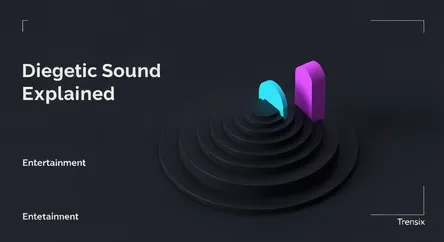Entertainment
Diegetic Sound Explained

Discover diegetic sound, the sounds that exist within a film's world. Learn how it enhances realism and immerses audiences in the story.
What is it?
Diegetic sound is any sound that originates from within the world of the film. It's a sound that the characters themselves can hear. This includes dialogue, footsteps, a door slamming, or music playing from a car radio in the scene. In essence, if the source of the sound is visible or implied on-screen, it is diegetic. This is the opposite of non-diegetic sound, such as a film's orchestral score or a narrator's voiceover, which exists outside the story's world and is only for the audience's benefit. Diegetic sound is a fundamental tool for building a believable and immersive cinematic environment.
Why is it trending?
The concept of diegetic sound is gaining traction as audiences become more cinematically literate. With the rise of video essays and behind-the-scenes content on platforms like YouTube, viewers are more curious about the craft of filmmaking. Directors are increasingly using diegetic sound in creative ways to blur the lines between reality and cinematic effect, grounding fantastical stories in a tangible world. This conscious use of sound design is celebrated for its ability to create a more authentic and engaging viewing experience, making it a popular topic of discussion among film enthusiasts.
How does it affect people?
Diegetic sound directly impacts an audience's sense of immersion and emotional connection. By creating a consistent and believable soundscape, it makes the film's world feel real and lived-in, pulling the viewer deeper into the narrative. It can heighten tension, such as the sound of a ticking clock in a thriller, or establish a specific mood, like the distant sound of a party. When used effectively, diegetic sound anchors the story in reality, making the characters' experiences and emotions feel more immediate and impactful, thereby strengthening the overall power of the film.